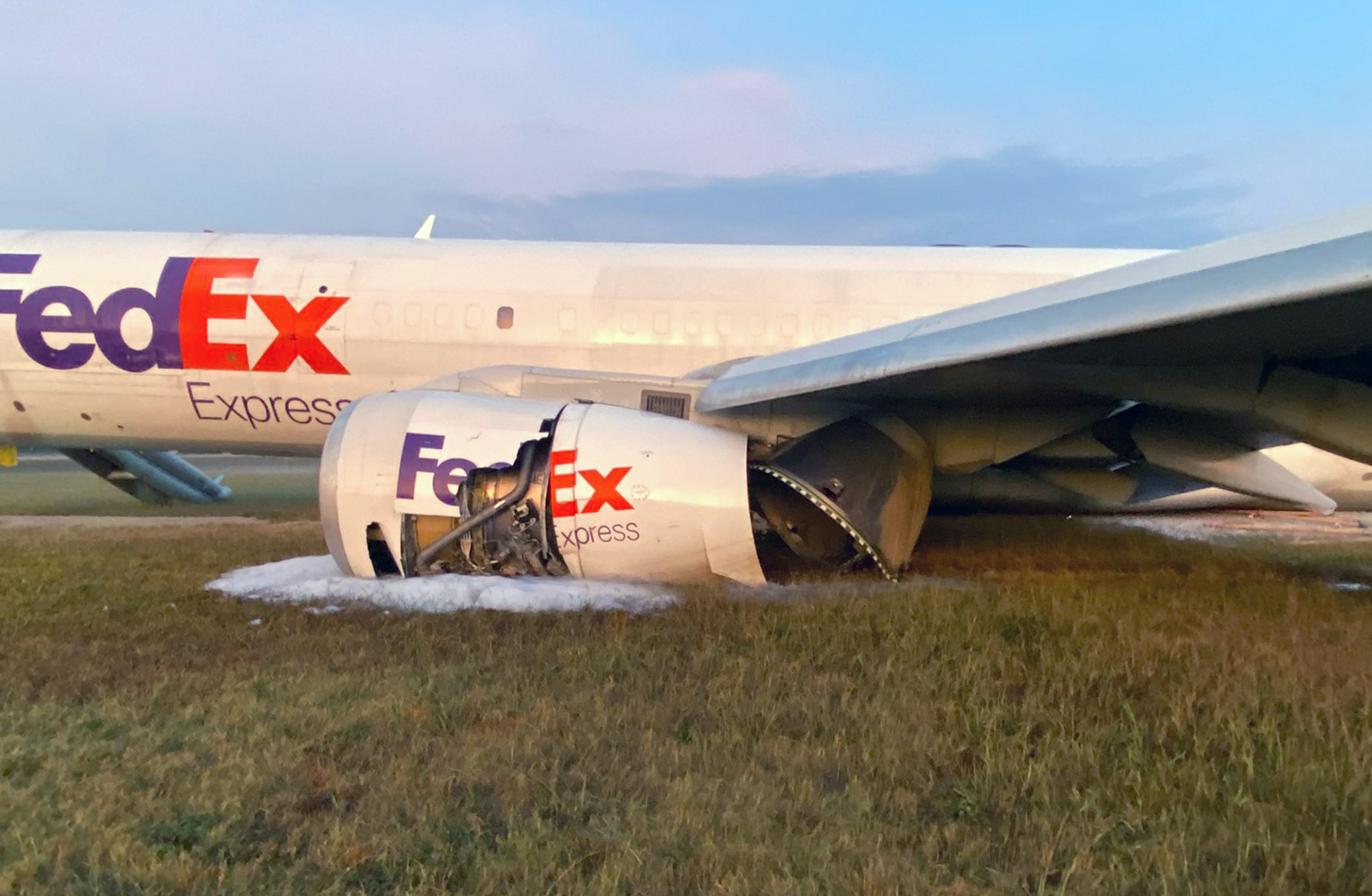Date & Time:
Oct 4, 2023 at 2347 LT
Type of aircraft:
Boeing 757-200
Registration:
N977FD
Flight Phase:
Landing (descent or approach)
Flight Type:
Cargo
Survivors:
Yes
Schedule:
Chattanooga – Memphis
MSN:
24118/163
YOM:
1988
Flight number:
FDX1376
Country:
United States of America
Region:
North America
Crew on board:
3
Crew fatalities:
0
Pax on board:
0
Pax fatalities:
0
Other fatalities:
0
Total fatalities:
0
Captain / Total hours on type:
393
Copilot / Total hours on type:
1651
Aircraft flight hours:
52468
Circumstances:
This accident occurred when the flight crew of Federal Express flight 1376, a Boeing 757-236, was unable to extend the landing gear during their approach to Chattanooga Metropolitan Airport-Lovell Field (CHA), Chattanooga, Tennessee. The main landing gear (MLG) and nose landing gear (NLG) are hydraulically retracted and extended under normal conditions by the left hydraulic system. To retract or extend the landing gear, a flight crew member must move the landing gear control lever out of its detent and position it to its up or down position. Lever movement is transmitted through control cables to the landing gear selector valve. Operation of the valve supplies left hydraulic pressure through hydraulic lines to either retract or extend the landing gear and operate the landing gear doors. Shortly after takeoff from CHA, the captain of flight 1376 called for gear up and the first officer (FO) raised the landing gear control lever to retract the landing gear. The flight crew indicated that both the MLG and the NLG retracted to their up and locked position. Digital flight data recorder (DFDR) data showed that 22 seconds after gear retraction the hydraulic fluid quantity and pressure in the left hydraulic system began to decrease. A left hydraulic system low quantity indication and master caution were recorded shortly thereafter. After troubleshooting the hydraulic issue per the procedures in the Quick Reference Handbook (QRH), the flight crew made the decision to return to CHA. While preparing to land, the MLG and NLG did not extend as expected after the landing gear control lever was positioned to its down position. Cockpit voice recorder (CVR) data indicated that a triple chime was audible, and the captain said, “Gear disagree.” The first officer confirmed, “Gear disagree. The gear is not coming down.” The captain contacted air traffic control (ATC) to break off their approach and reported that they had an unsafe gear indication. Following the failed attempt to lower the landing gear, the crew went methodically through the Hydraulic System Pressure checklist of their QRH. Following the procedures, the crew attempted to lower the landing gear using the alternate landing gear extension system. This system uses a dedicated hydraulic circuit within the left hydraulic system to release the uplocks on the landing gear doors and gear when activated. To extend the gear with this system, a flight crew member would move the ALTN GEAR EXTEND switch (a guarded switch) to the down position. Because the checklist indicated that nose wheel steering would be inoperative following the alternate gear extension and the aircraft would not be able to clear the runway on its own, the crew declared an emergency with ATC. The crew performed the alternate gear extension procedure, and the landing gear did not come down. The crew completed the procedure several more times over the next 7 minutes, including re-completing the Hydraulic System Pressure (L only) checklist in full. As the crew set the aircraft up for the final approach, they began following the Gear Disagree checklist. ATC cleared the flight to land. The captain briefed the FO that he was planning to aim close to the runway threshold and the FO verbally updated the captain on wind conditions and airspeeds. They agreed that a jump seat occupant on board the airplane would open the left forward main entry door after they landed. Upon landing on runway 20, the flight crew was unable to stop the airplane, and it slid off the departure end of the runway and impacted localizer antennas before coming to rest about 830 ft beyond the end of the runway. All three crew members evacuated safely and the airplane was damaged beyond repair.
Probable cause:
The failure of the alternate gear extension system, which prevented the landing gear from being lowered. The cause of the system failure was a broken wire, due to tensile overload, between the alternate gear extend switch and the alternate extension power pack (AEPP), preventing the AEPP from energizing and supplying hydraulic fluid to the door lock release actuators for the nose landing gear and main landing gear. Contributing to the accident was the loss of the left hydraulic system due to a ruptured left main gear door actuator hose from fatigue, which prevented normal landing gear operation.
Final Report:
N977FD.pdf9.46 MB








